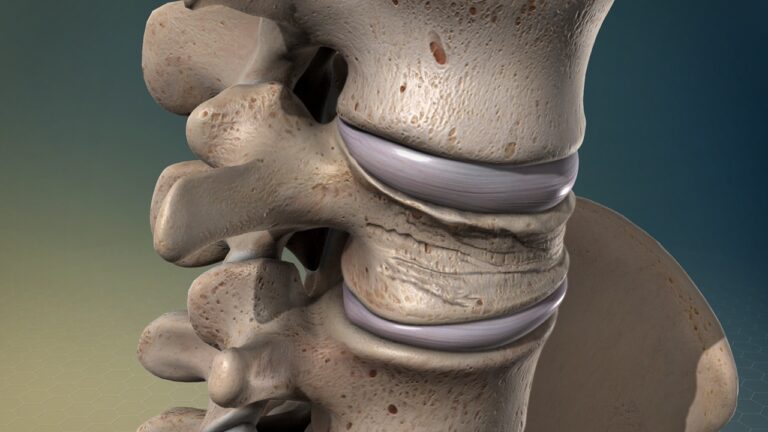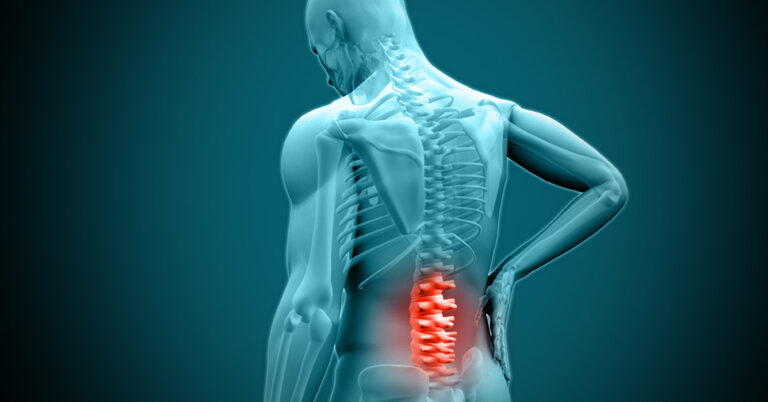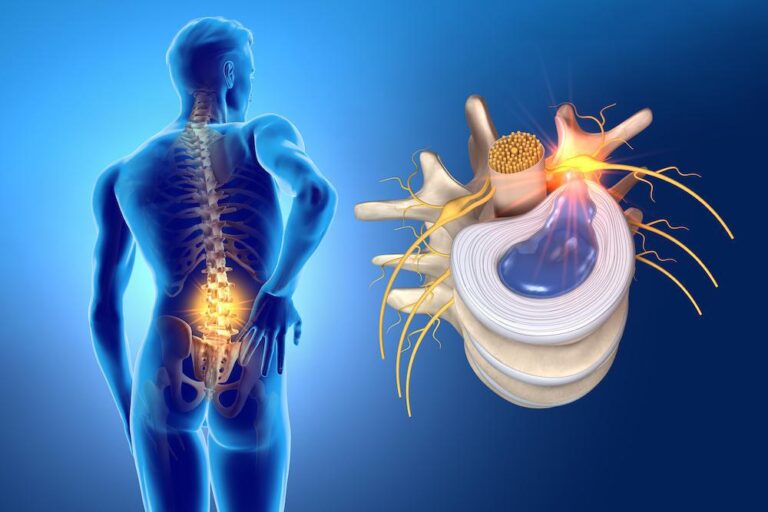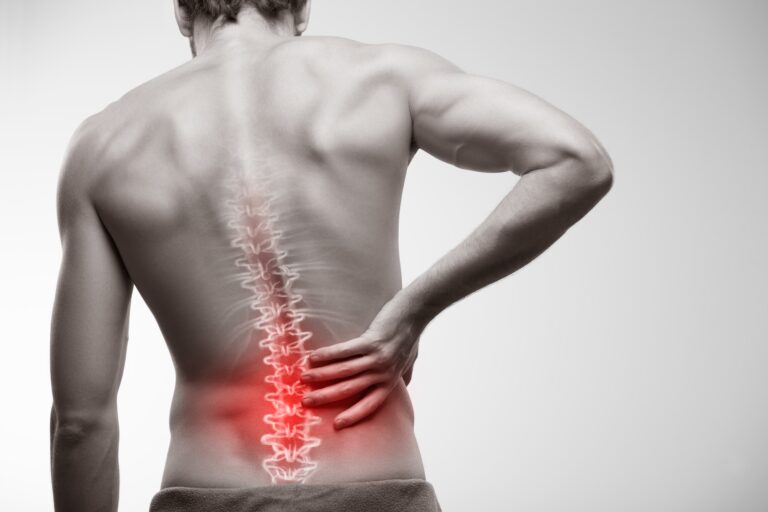Lumbar spine injuries are very common in athletes. This fact is almost to no surprise, given how much pressure is placed on an athlete’s spine versus that of a non-athlete. Through their rigorous training, athletes are touted as having superior strength and flexibility, as opposed to those not in sports. This isn’t, however, that much of an advantage in terms of possibly catching a sports injury.
During their training sessions and games, athletes exercise repetitive tension, flexion, and axial load type movements, as well as back extensions. When their spines give in to that extra stress, these may weaken and be prone to injuries. Unfortunately, some spinal injuries can have permanent and lasting effects, particularly in severe cases.
To that end, here’s a compilation of six of the most common sports-related spine injuries:
Contents
1. Vertebral Compression Fracture

A vertebral compression fracture happens when the vertebral body or the bony block in the body collapses. This can lead to effects like loss of height, severe pain, and deformity. Generally, a vertebral compression fracture can commonly occur in the spine’s middle portion, or the thoracic spine, particularly way down in the lower part.
To diagnose the occurrence of a vertebral compression fracture, an athlete may first complain about symptoms like:
- Loss of bowel or urinary control
- Pain in the back or neck
- Uncontrolled muscle spasms
- Numbness or tingling
- Weakness or paralysis of the limbs
When an athlete visits their doctor at East ID Spine and other competitive clinics and treatment facilities, after the onset of symptoms of vertebral compression fracture, testing and a diagnosis will be made on the patient. This is very important so as to come up with the best decision on what treatment the patient is best suited to receive.
With that, some of the modes of diagnosis of vertebral compression fracture are:
- X-ray. This produces a picture of the affected part, the vertebrae, and the joints’ outline. An x-ray is also needed so as to show the current state of the bone alignment.
- Dual-energy x-ray absorptiometry (DXA or DEXA) or bone densitometry. This type of test will be requested by the doctor so as to get information on the bone’s mineral density. This type of scan is so precise that it’s also able to detect even small changes in bone mass.
After you’re given the treatment plan, as prescribed by your doctor, it’s a must to be very religious about the follow-up treatment and checks. Follow all instructions given to you. If there’s anything that’s unclear, don’t hesitate to ask questions. Along with that, these other home care tips may be helpful as well:
- Take all the medications, as prescribed
- Refrain from doing any painful or strenuous activity until your doctor has given you the clearance to do so
- Apply ice to your back or any other painful area of your body when pain strikes.
2. Spinal Stress Fracture (Spondylolysis)

Spinal stress fractures are very common in athletes who do a lot of heavy and repetitive weight-lifting exercises, like running or walking. When pushed to its limit, even a simple activity, like running or walking, may cause spinal stress, leading it to crack.
In athletes, stress fractures are more likely to occur when a new training or exercise regimen is being done, or you’ve abruptly increased your training’s intensity, without giving your body the time to rest or slowly prepare for it. Because the muscles and the spine aren’t conditioned properly, they weaken, and may get tired easily.
One of the most challenging things about spondylolysis is that clinically, it may not come with symptoms right away. Typically, a spinal stress fracture can be seen by accident through a back x-ray done initially for other reasons. If an athlete does have symptoms, it’s usually along the lines of the following:
- Lower back pain
- Weakness in the feet
- Buttocks pain
- Numbness.
If your doctor deems the extent of the spinal stress fracture only to be minor, nonsurgical treatment methods may be suggested. These methods can include resting or taking a break from training, undergoing physical therapy, and taking analgesic medication when needed.
Before a determination or diagnosis can be made, the doctor will typically order tests like:
- X-ray, to study the bone’s current dense structure. If the x-ray shows a crack or any stress fracture in the fourth or fifth lumbar vertebra’s pars interarticularis portion, that can be indicative of spondylolysis.
- Single photo emission computed tomography (SPECT) scans. This test uses a tiny amount of radioactive material to see areas in the spine where increased activity occurs. A SPECT scan is usually ordered in the event that a CT scan is unavailable.
- Computed tomography (CT) scan. This type of test uses a combination of x-ray and computer technology, so as to produce even more detailed images than an ordinary x-ray would.
3. Disc Herniation

An herniated disc can happen when the outer part of the spine’s disc tears, thereby exposing its inner portion. Because herniated discs can be very painful, it’s a must to limit any heavy lifting and strenuous activities. As to athletes, disc herniation may be more common in older athletes.
In most instances, disc herniation usually occurs in the lower back. But, there are rare situations when it may also happen in the neck. Whether in the lower back or neck, the effect is the same, whereby it’s focused only on one side of the body, presenting symptoms such as:
- Weakness. This is what may cause you to be more prone to stumbling and falling, or now being unable to lift heavy objects.
- Arm or leg pain. Pain in the buttocks is commonly experienced by those with herniated discs in their lower back. For those who suffer it on their neck, the pain is usually within the shoulder and arm areas.
- Numbness or tingling sensation. This is felt in the body part with affected nerves.
When the first symptoms of herniated disc show, don’t ignore them. The sooner it’s treated, the more likely you’re to enjoy a full and complete recovery. If you wait too long before having your condition checked, you’re risking the chance of having permanent and long-term nerve damage. Sports injuries can affect athletes in the long-run, both physically and mentally.
Along that end, some of the more frequently used testing modalities by your doctor would be:
- Electromyogram and nerve conduction studies. These tests are used to measure the electrical impulse along the muscle tissue, nerve roots, and peripheral nerves. This test can help determine whether or not there’s an existing nerve damage that needs to be addressed.
- Magnetic resonance imaging (MRI). This refers to the diagnostic test that produces 3D images of the body structures by using powerful computer technology and magnets. An MRI can show the spinal cord, as well as the surrounding areas to check for abnormal enlargements and tumors, among others.
- Myelogram. This is an x-ray of the spinal cord, done after injecting a contrast material into the cerebrospinal fluids. The purpose of this test is to show any pressure on the spinal cord due to herniated discs, tumors, or bone spurs.
If your symptoms advance, with no signs of improvement, then that’s when more aggressive treatment will be ordered. Your healthcare provider may recommend either of the following treatment forms:
- Surgery. This is prescribed only in rare cases when the herniated disc also injures nerves, which affect the bowel or the bladder. When that happens, an emergency surgery will usually be ordered. For non-emergency cases, surgery is done as a last resort when all other treatment forms have already failed.
- Medication. Doctors will prescribe how much medication you can take for pain relief or as a muscle relaxant.
- Spinal injections. These are also referred to as nerve blocks or epidurals, whereby that shot of spinal injection or medication is injected directly to the spine.
4. Lower Back Strains And Sprain

Lower back strains and sprains are common in golfers, gymnasts, and weightlifters. Because of the repeated strain on the back, the athlete may experience temporary limitations in their physical abilities. Some of the pertinent symptoms of lower back strains and sprains include:
- Weakness
- Pain
- Bruising
- Swelling
During the first onset of symptoms, it’s very important to seek medical attention right away. Otherwise, if left untreated, symptoms may progress easily and get worse. To avoid having lower back strains and sprains, the doctor may recommend for the athlete to go through a physical therapy focused on stretching and strengthening the lower back.
5. Lumbar Disc Degeneration

Lumbar disc degeneration happens when there are changes that take place in the discs of your spine, leading to pain. The spine’s discs are very important parts, usually acting as shock absorbers between the spine, the bones, and the vertebrae. These are also responsible for flexible motions, so you can move and go about with day-to-day activities with ease.
It’s a common occurrence for nearly everyone to experience disc degeneration as they age. For athletes, however, this fact can be truer, given the excessive wear and tear that their spines go through during training and games.
A person with lumbar disc degeneration is usually an otherwise healthy individual. Some of the common symptoms discovered in those with lumbar disc degeneration are:
- Weakness in the leg muscles
- Pain that worsens when sitting down
- Tingling and numbness in the extremities
- Pain that worsens when twisting, bending, and lifting
- Onsets of severe pain that usually come and go
To come up with a diagnosis of degenerative disk disease, your doctor will first start to ask questions about the clinical symptoms you experience. Those questions may include:
- When did the pain start?
- How far can you walk and run, without experiencing pain or any discomfort?
- Where do you feel pain?
- Do you have other symptoms, on top of pain, like tingling sensations and numbness?
- What activities do you do that causes the most pain?
When lumbar disc degeneration is first diagnosed, the first line of treatment forms may be what’s known as conservative therapy. This is comprised of the following:
- Taking medicines to relax the pain and muscles
- Going on bed rest
- Using lumbosacral back support
- Being educated on proper body mechanics, especially if you’re still deemed fit to train as an athlete
- Watching your weight, if needed.
If conservative therapy doesn’t work and your pain scale is quite high, other medical treatment forms may now be done. First, this starts with the taking of over-the-counter or prescription medications, depending on what you need. Those medicines may be any of the following:
- Muscle relaxants, if you’re beginning to experience muscle spasms
- Over-the-counter or prescription-strength nonsteroidal anti-inflammatory drugs (NSAIDs) to help with the pain
- Opioid pain relievers, in worse cases
When your oral medications still aren’t working well to provide you with the relief you need, that’s when therapeutic injections will come in as a recourse. These include:
- Trigger point injections
- Epidural corticosteroid shots
- Nerve blocks
6. Cervical (Neck) Stingers

Cervical (neck) stingers are quite prevalent in high-contact or collision sports.
During a high-contact sport or an accidental collision, an athlete’s head can be forced regularly to the side. When that happens, the cervical nerves may either overstretch or compress. One of the initial effects an athlete is going to feel would be pain on their arms. But, it’s not like any other ordinary pain. Injured athletes would often describe it as feeling like electric shocks lasting from seconds to minutes.
When cervical (neck) stingers happen to an athlete, the treatment form is usually through a comprehensive physical therapy program. The goal of this is to focus on strengthening the muscles, ligaments, and tendons.
Final Thoughts
When an athlete suffers from a spinal injury, never self-medicate. In fact, it’s also very important to never brush those symptoms away. Early diagnosis and treatment are key to avoiding the symptoms from worsening to conditions that may be permanent. A neurosurgeon, along with a team of physical therapists and other medical professionals, are often the best medical professionals who can help an injured athlete out in terms of sports-related injuries.
















